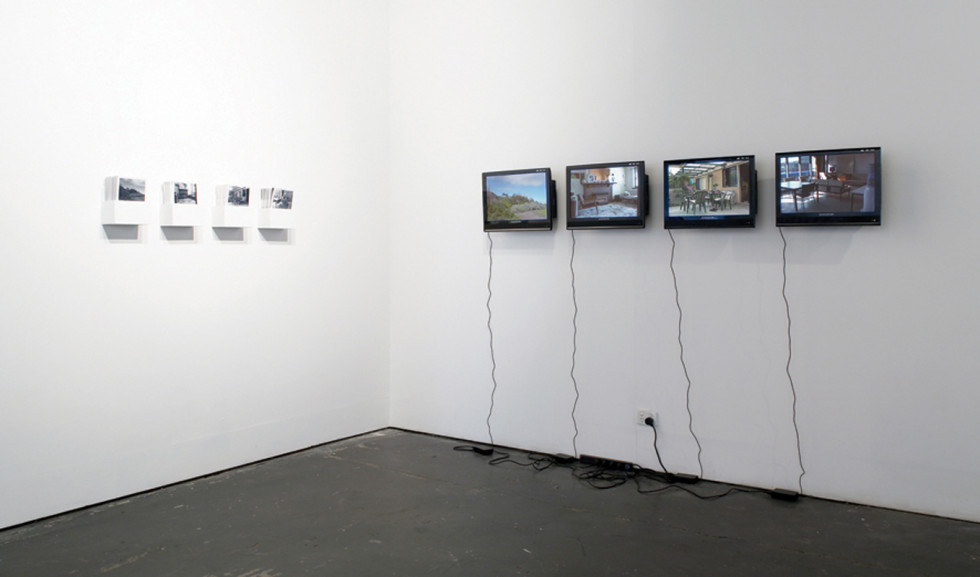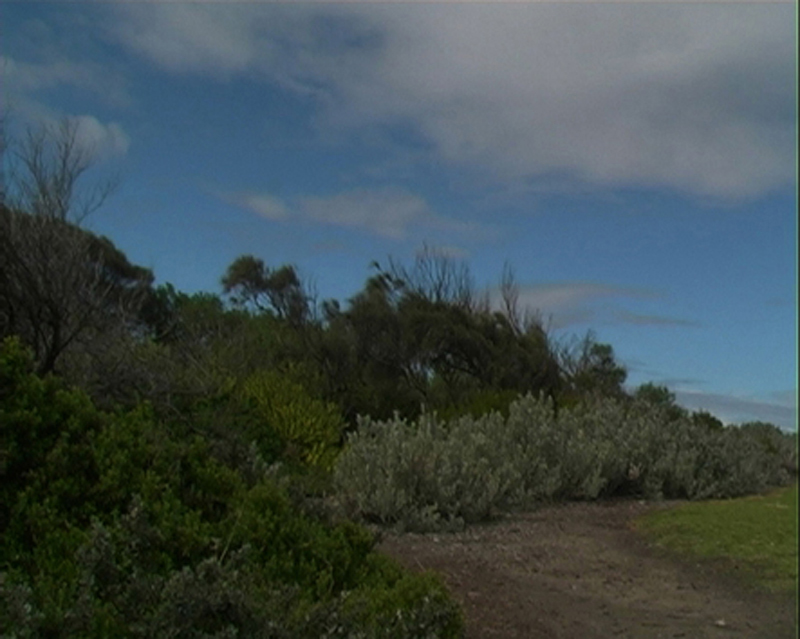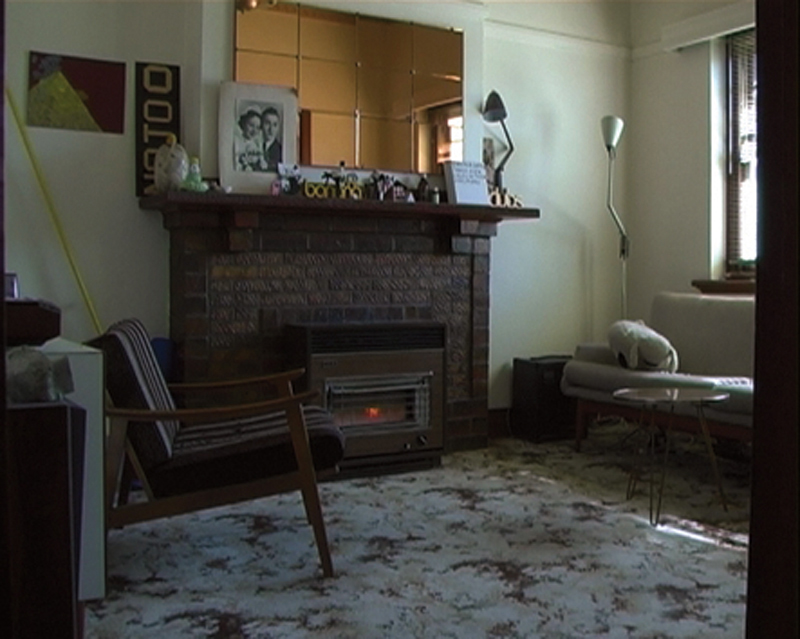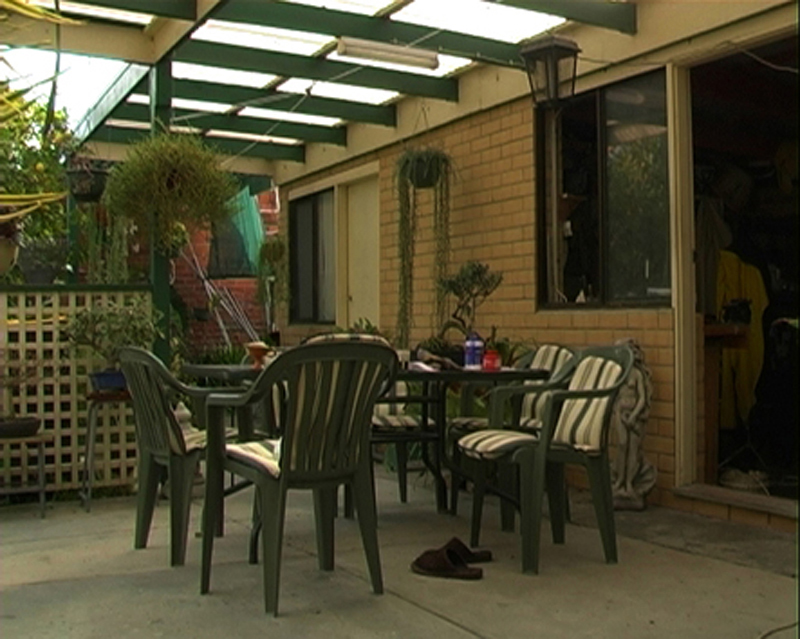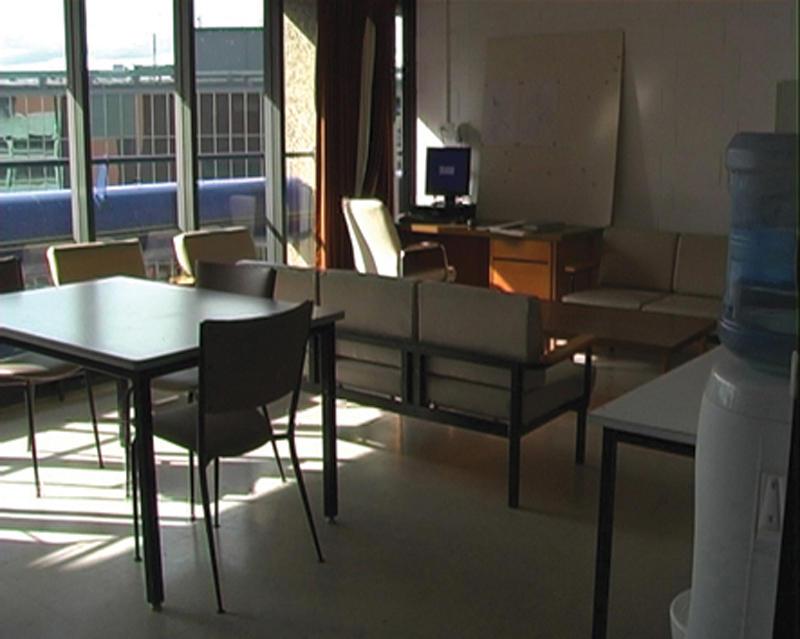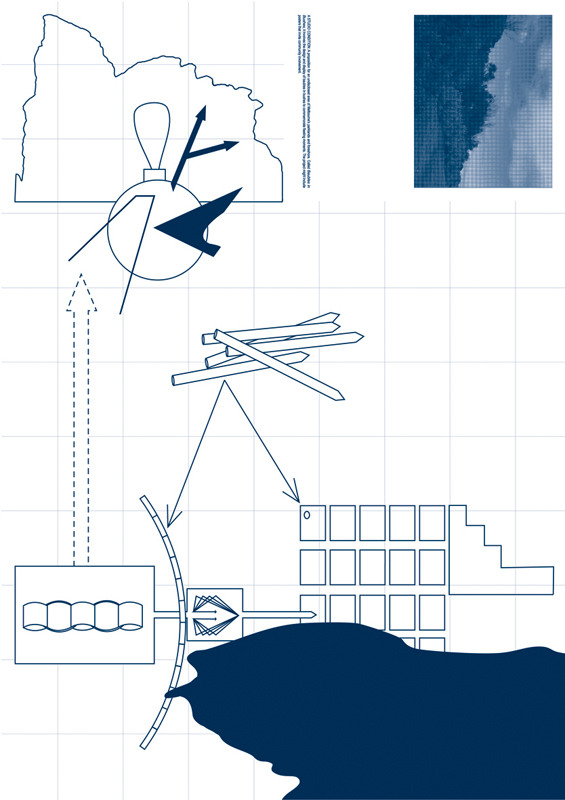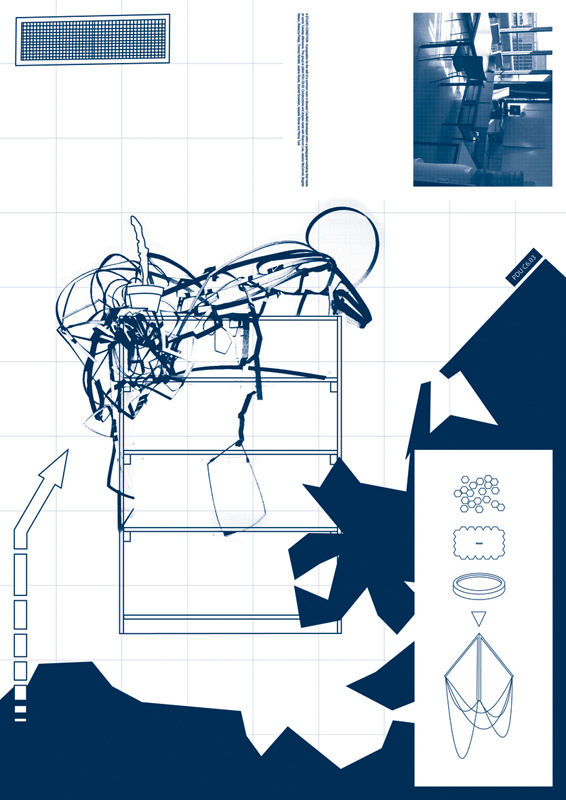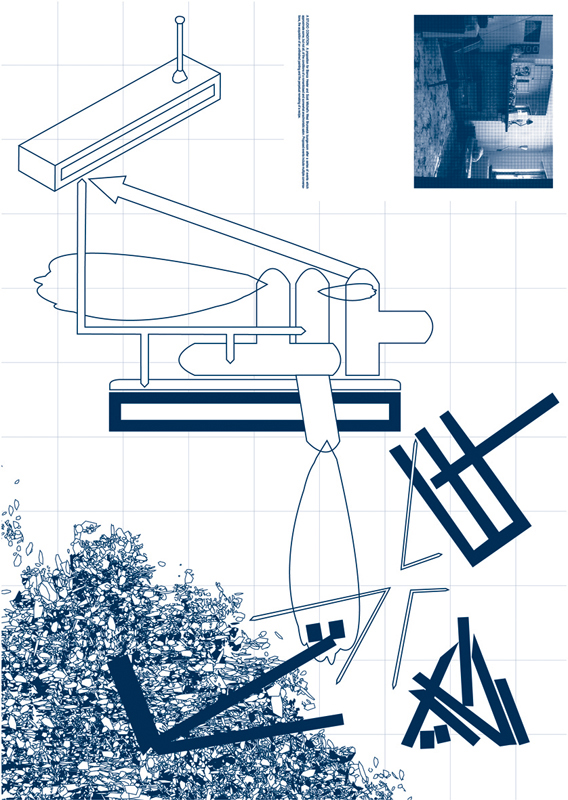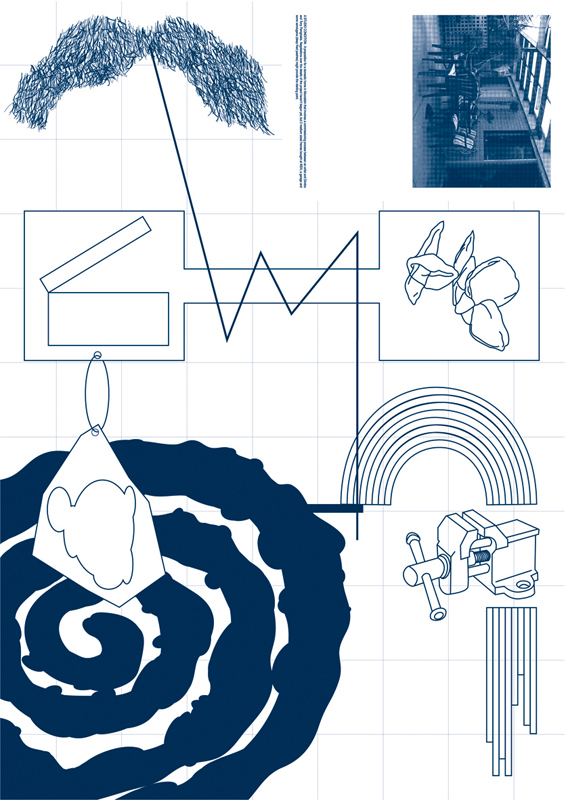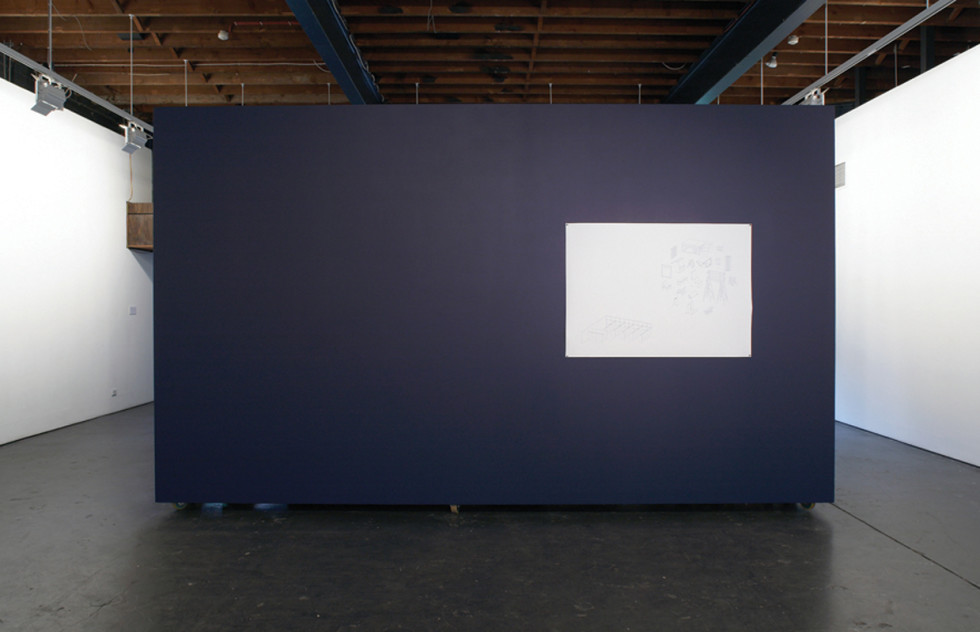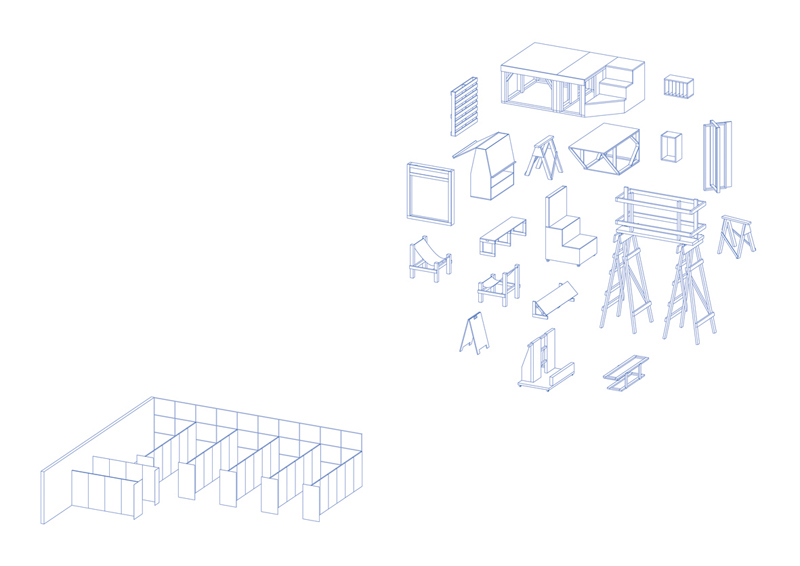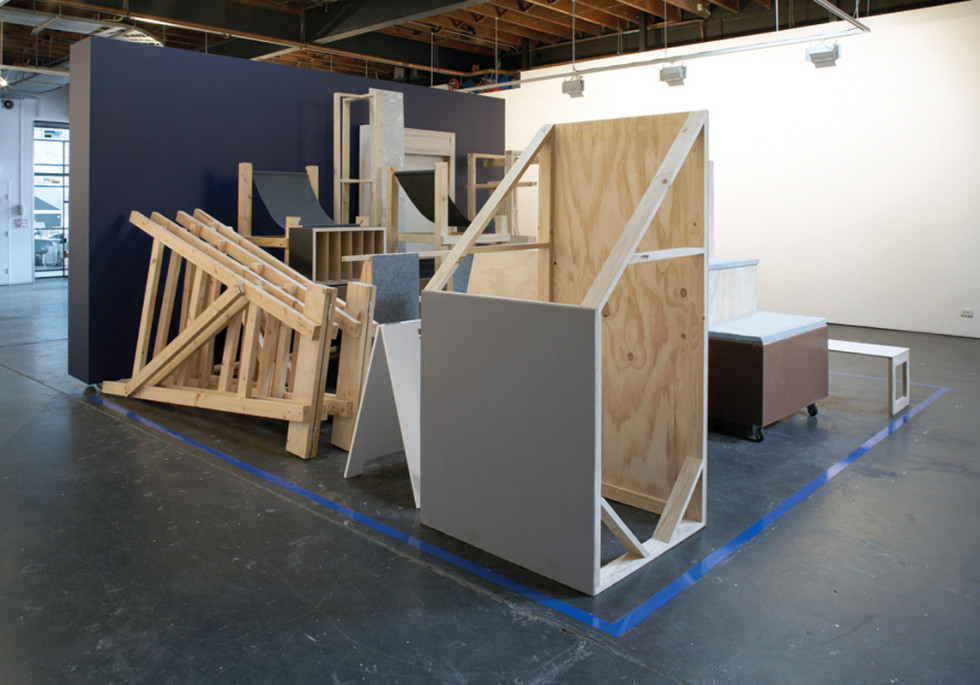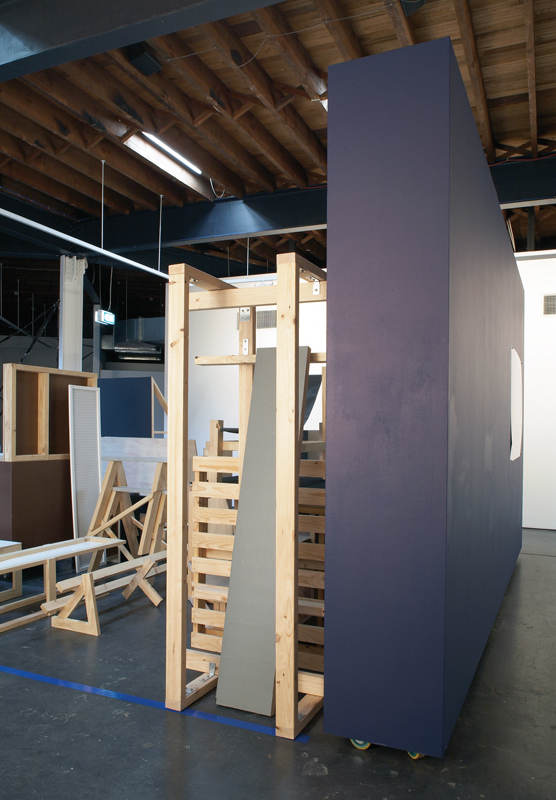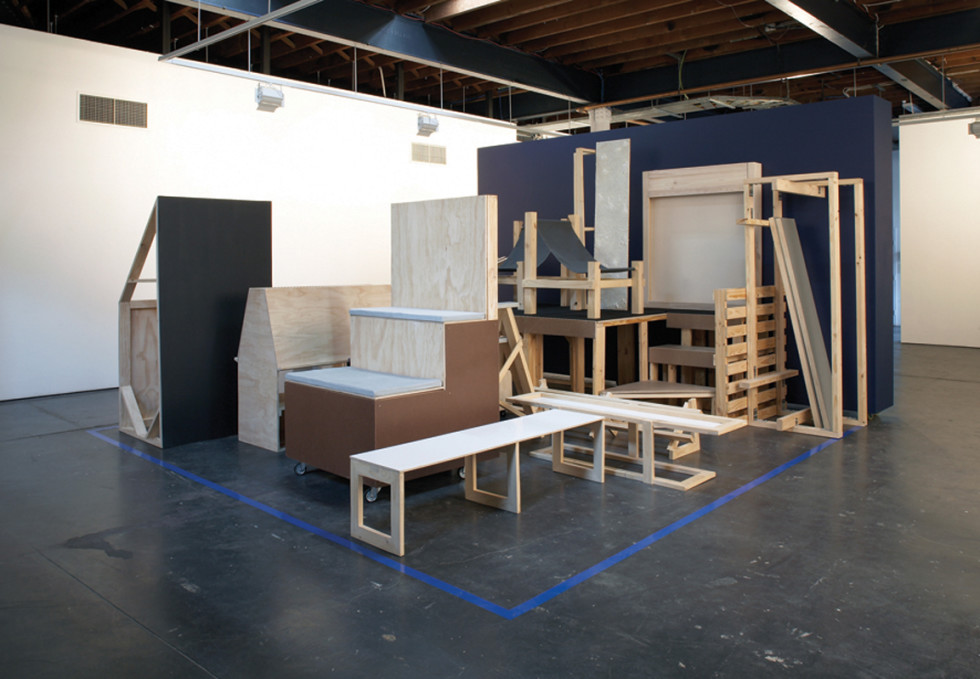OSW: Terri Bird, Bianca Hester & Scott Mitchell
STUDIO CONDITIONS is a proposition about the general circumstances of art. These are the circumstances that accompany and produce the multiple practices that are made public in any exhibition. The proposition of STUDIO CONDITIONS elaborates these procedures, staging them as a series of relays or posts in endless iteration. Despite the evidence of precise decisions, concerning the appearance and placement of the many components of this work – the numerous objects, images, diagrams and texts in the exhibition – what is deliberately obscured through this proliferation is any sense of the work arriving at a final version or form. On the contrary this is merely one incident into the investigation of the conditions of the studio.
Intentionality
Intentionality still figures in relation to the production of art, despite the dislodging of the author as an essential origin of the work, due to the need to make decisions. Faced with this conundrum Panigirakis has reworked the processes of decision making over the past three years through complex procedures that attempt to extricate the artist from a masterful relationship with intentionality. This can be seen in past projects such as Hole in the Bucket, CLUBSproject 2004, that attributed roles based on the well known nursery rhyme to five other artists. These artists were given a series of instructions to interpret, based on their role in the story, with the aid of a number of ascribed assistances that resulted in the production of the final exhibition. The desire to side step the role of author as origin of the work of art by designating to others certain key aspects of decision making serves to multiply the production of meanings away from the singular. Taking on a supervisory role in directing or managing particular kinds of situations that enable activity allows Panigirakis to evacuate himself from the responsibility of immediate decision making. Whilst taking responsibility for enabling others to make decisions resulting in the production of the work Panigirakis eludes the sole responsibility of author. STUDIO CONDITIONS is a precise staging of this process of displacement prior to the project’s opening out into its proposed series of interventions across five specific sites of inquiry and their community of participants.
Boundaries
The convoluted procedures employed by Panigirakis to designate to others decision making structures the artist as absence, opening a psychological dimension in the processes of production. Dispersing the role of decision making expands the boundaries of self and allows for a greater degree of fluidity through an engagement with others. This fluidity has an effect not only on how the work finds its form, but also on the audience it forms. Rather than privileging a subjectivity that finds itself confirmed by a singular and easily consumed work of art, STUDIO CONDITIONS stages a series of spatial and temporal dispersals that work to thwart narcissism and unravel the illusion of a centered subjectivity.
The work entails seven sites: the studio, the gallery and five sites from around Melbourne evident·in the videos presented in the exhibition. Preceding the manifestation of the work in the gallery, various interventions in the five sites have taken place and will continue to occur over the following 12 months.
Boundary
STUDIO CONDITIONS is a delineation incorporating a series of diagrams outlining the potential of future engagements, to be filled in and/or activated by others. For example the muted palette of the furnishings, both prototype and template, is a temporary condition awaiting a series of managed rendezvous.
The Function of the Studio1
STUDIO CONDITIONS clearly alludes to the influential essay ‘Function of the Studio’ by Daniel Buren, from 1979, and its associated essays on the museum and architecture.2 In the essay on the studio Buren scrutinises the relations that organise art’s production from the artist’s studio through to the gallery, museum or other exhibition site. Buren not only reflects on the physical spatio-temporal disposition of the situation in which the work of art is considered, he also draws attentions to the historic, economic and ideological relations that position both the work of art and the viewer. He maintains these material and social structures are implicated in the systems and methods that organise the display of works of art. Through this argument Buren contrasts the studio, as a place of production, to the museum, as a place of consumption. What this highlights for him is the question of ‘the work’s place’. Buren laments a certain loss of vitality he perceives in works of art once they are transferred from the studio, likening the museum to a refuge or citadel against oblivion that nevertheless has the deathly air of a cemetery.
On the face of STUDIO CONDITIONS could be seen lo be working within the existing conventions and assumptions underling the idea of the studio as a site of production and the gallery as the place for exhibiting that production. STUDIO CONDITIONS doesn’t appear to contest that all forms of art production are immediately or already absorbed by the institutional system of exhibitions. Nonetheless, what STUDIO CONDITIONS does provide is a space within which to examine these institutional relations not as an ‘outside’ to this situation but from within. In effect STUDIO CONDITIONS produces a clearing that is at the same time filled with the detritus of the ‘condition’ under examination. This detritus, these remainders, function as exemplars, patterns or models — not a prototype but a paradigm – a paradigm both in terms of patterns and as a method which forms the basis of future manifestations or events.
Symptoms and Conditions
The conditions under examination in STUDIO CONDITIONS, those pertaining to the circumstances of art in general, are made evident through their symptoms. Whal is significant is the way existing symptoms have been differentiated and distinguished into new groupings that allows previously obscured conditions, concealed through habit, to be made evident. This is a process ascribed to artists by Giles Deleuze, as noted by Daniel W. Smith in relation to the link between literature and life in Deleuze’s project ‘critical and clinical’. Deleuze suggests artists are symptomatologists, capable of identifying new forms of disorder through practices that reorganise the materials, images and formations of their field.
Daniel Buren, October, Vo/. 10, Autumn, 1979. pp. 51-58 ↩
‘Function of the Museum’, Artforum, September 1973, ‘Function of Architecture: notes on work in connection with the places where it is installed. Taken between 1967 and 1975, some of which are specifically summarised here’, Studio International, Sept-Oct, 1975 ↩
